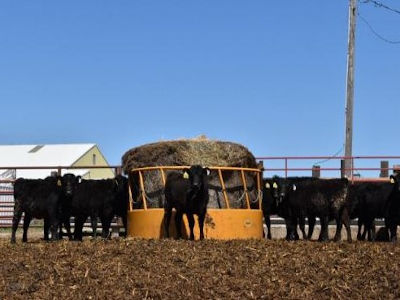By Erika Lundy and Beth Reynolds et.al
Drought and other weather events have ultimately caused a tight forage supply going into the winter-feeding period for multiple operations. Here are some tips to make the most of the forage resource you’re feeding this winter.
1. Calculate feed needs and compare to inventory. A basic calculation assumes intake to be 2.25 – 2.5% of body weight. Knowing this, a quick calculation for feeding 100 mature cows for 5 months would be:
100 cows X 1300 lb X 2.5% = 3,250 lb DM/day x 150 days = 487,500 lb or 244 ton
Then account for the forage dry matter. If we assume the hay is 85% dry matter, 287 tons of hay is needed. Feed waste should also be accounted for, with 10-15% expected to be wasted in good feeding programs. That means 330 ton of hay is needed to feed 100 mature cows for 5 months. Don’t forget to account for bulls, heifers, weaned calves, or other livestock when calculating feed needs and comparing feed inventory.
2. Reduce nutrient requirement and feed intake. Some of the more obvious strategies to reduce feed needs include early weaning fall-calves, and following through on marketing cows that you held off on selling until a new tax year. Additionally, consider environmental factors that impact feed needs, and take action to reduce spikes in nutrient requirements. Two examples would be providing windbreaks to combat cold stress and controlling mud. Research shows that 4 – 8 inches of mud reduces feed intake by 15% and increases requirements.
3. Look for ways to minimize feed waste. Bale storage methods and bale feeders have been extensively studied to compare feed waste. Bales should be smaller in diameter than the feeder. By feeding smaller diameter hay, more hay will fall into the bottom of the feeder rather than on the ground as cows pull out and consume the hay. Although associated with a high capital cost, improving storage or feeding methods doesn’t take long for hay savings to pay for the investment.
